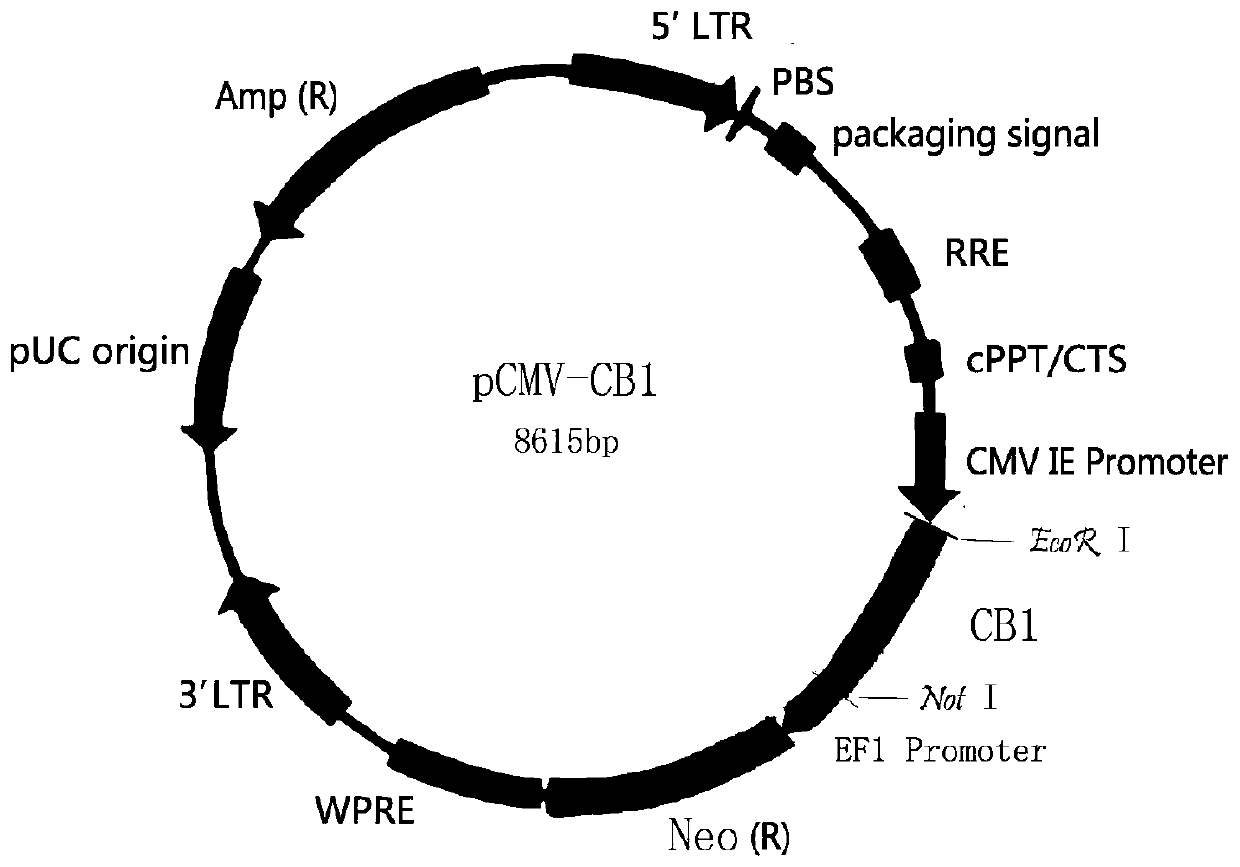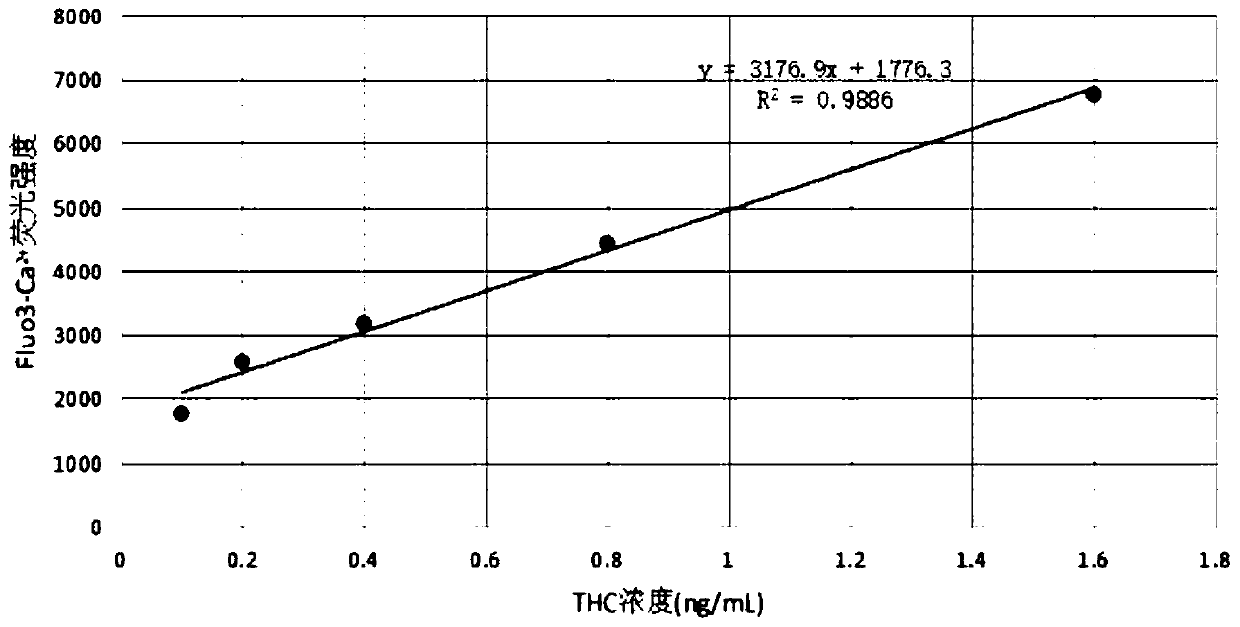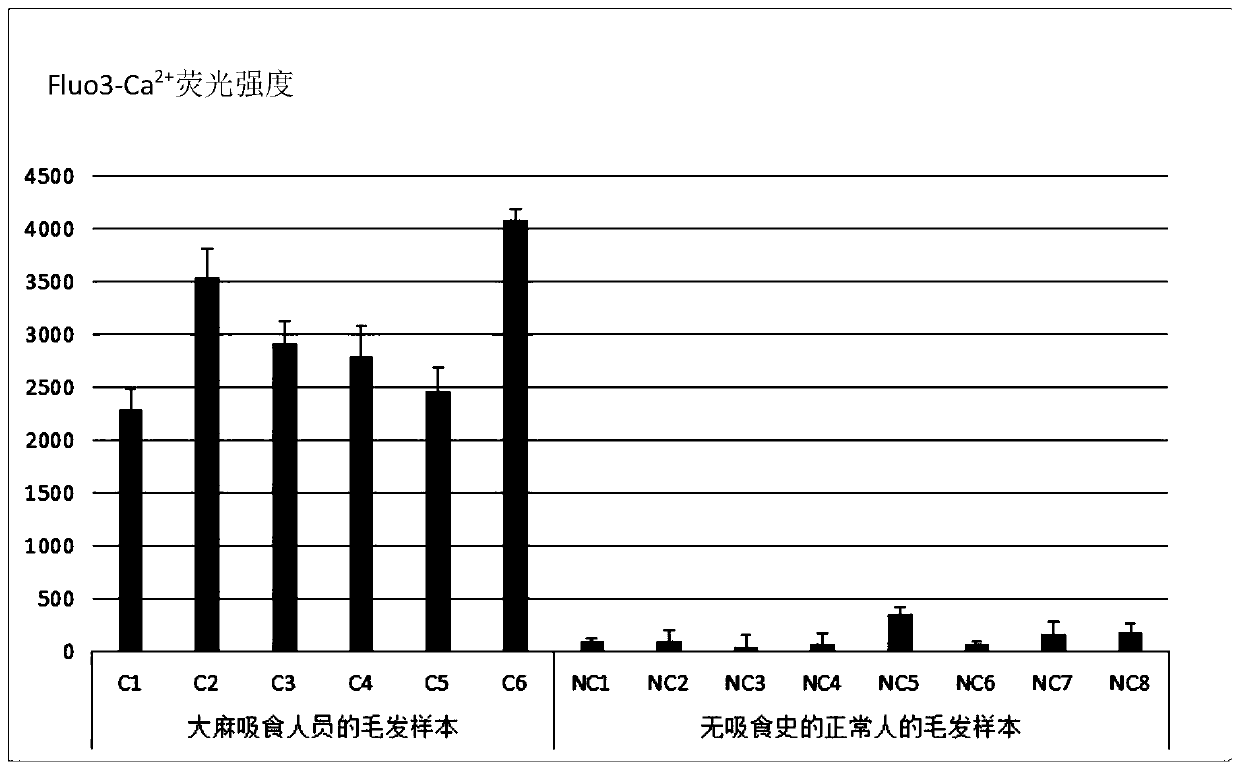Cannabinoid active substance detection method based on intracellular free Ca<2+> concentration change effect and cannabinoid active substance detection kit
A technology of active substances and ion concentration, applied in the biological field, can solve the problems of low component content, undetectable, impossible immunoassay, etc., achieve rapid detection, solve difficult supervision, and highly sensitive detection effects
- Summary
- Abstract
- Description
- Claims
- Application Information
AI Technical Summary
Problems solved by technology
Method used
Image
Examples
Embodiment 1
[0030] Example 1 Construction of pCMV-CB1 plasmid
[0031] Clone the human cannabinoid receptor CB1 gene into the CMV promoter of the lentiviral expression vector pCDH-CMV-MCS-EF1-Neo by ligating the restriction sites EcoR I and Not I to construct the eukaryotic expression plasmid pCMV-CB1 (Such as figure 1 Shown).
Embodiment 2
[0032] Example 2 Establishment of CB1 / 293 stable cell line
[0033] The pCMV-CB1 plasmid, pH1 plasmid, and pH2 plasmid were co-transfected into lentiviral packaging line cells 293V to prepare CMV-CB1 lentivirus and transfected into HEK293 cells. G418 screened and cloned to establish a CB1 / 293 stable transfected cell line. Specific steps are as follows:
[0034] 1) Preparation of packaging line cells: One day before transfection, use DMEM-H complete culture medium (containing 10% FBS and 100U / ml penicillin, 100μg / ml streptomycin double antibody) to prepare lentiviral packaging line cells 293V into 1 ×10 6 A / ml concentration is inoculated in a D19cm cell culture dish, 37℃, 5% CO 2 Cultivate overnight.
[0035] 2) Transfection: When the cells in the culture dish grow to 70%-80% confluence, use PEI transfection reagent (refer to its standard transfection procedure) to mix 20 μg of pCMV-CB1 plasmid, 14 μg of pH1 plasmid, The 293V cells in the culture dish were co-transfected with 4.7 μg...
Embodiment 3
[0042] Example 3 Application of the universal detection kit for cannabinoid active substances
[0043] The universal detection kit for cannabinoid active substances developed based on the technical scheme of the present invention can be applied to the detection of various samples containing cannabinoid active substances. In this embodiment, we take the hair of a person who smokes cannabis as an example. Specific steps are as follows:
[0044] 1) Hair sample processing: Take 6 hair samples of cannabis smokers and 8 hair samples of normal people without smoking history. The numbers are shown in Table 1.
[0045] Cut 20mg / portion of hair samples within 3cm of the hair root, cut into 5ml EP tube, add 2ml HBSS buffer (pH7.4) containing 1% keratinase, add a small amount of zirconium beads and quartz sand, crusher Shake and smash for 1 minute to obtain corresponding sample liquids.
[0046]
[0047] 2) Cell preparation: 5×10 5 Single / ml monoclonal CB1 / 293 cells were seeded in a 96-well cel...
PUM
 Login to View More
Login to View More Abstract
Description
Claims
Application Information
 Login to View More
Login to View More - R&D
- Intellectual Property
- Life Sciences
- Materials
- Tech Scout
- Unparalleled Data Quality
- Higher Quality Content
- 60% Fewer Hallucinations
Browse by: Latest US Patents, China's latest patents, Technical Efficacy Thesaurus, Application Domain, Technology Topic, Popular Technical Reports.
© 2025 PatSnap. All rights reserved.Legal|Privacy policy|Modern Slavery Act Transparency Statement|Sitemap|About US| Contact US: help@patsnap.com



